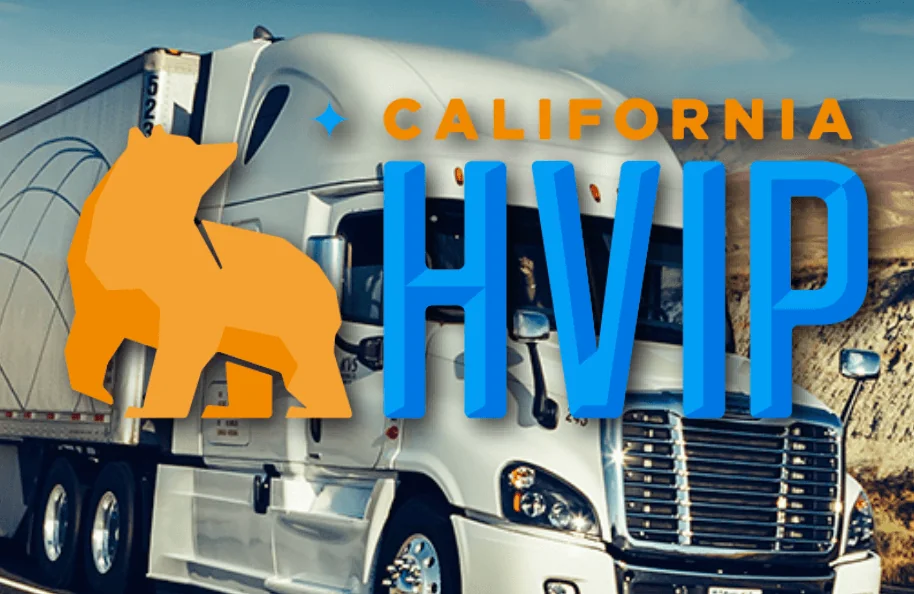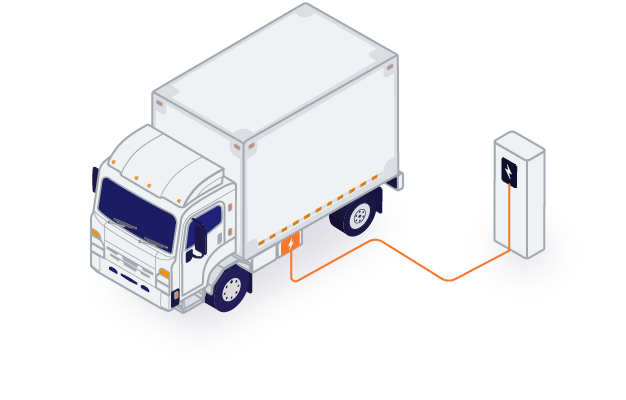By Jennifer Schwartz
What is HVIP?
Amid California Air Resource Board’s Advanced Clean Fleets regulation, fleet operators across California are eyeing ways to slash costs as they electrify their fleets. One notable sponsored incentive program is CARB’s HVIP, which offers point-of-sale vouchers for the purchase of Class 2b through 8 zero-emission trucks and buses, including transit, school and shuttle buses operated in the state of California.

While the program is geared towards reducing incremental costs for small fleet operators in disadvantaged communities, all fleets across the state can benefit from this incredibly well-funded program – which has already allocated $2.93 billion. With $190 million sitting in CARB’s HVIP fund as of now, the opportunity is ripe for California’s truck and bus fleets to dive in for cost savings.
What is my fleet eligible for?
First, it’s important to understand eligibility and how CARB allocates program funds. Specific funding has been reserved to support the deployment specific to vehicle types, as outlined in CARB’s funding page.
To break it down further, CARB equates a specific dollar amount or a cap of funding with each class of vehicle; however, even within those classes, different vehicle types can be awarded different dollar amounts. On top of that, there are adders and or reductions, depending on the size of a fleet, a fleet’s location and other factors. For example, a small fleet operating in a historically disadvantaged zip code will get an add-on to the base voucher amount.
Conversely, larger fleets may be required to purchase in bulk, can be subject to minimum purchase requirements, and will also have a reduction applied to their voucher amount. These fleets are usually eligible for somewhere between 50 and 80% of the full voucher. This is detailed in great length within CARB’s implementation website and FAQs.
The way that the program operates depends on many factors of a business, including the size, relative revenue streams, and so on. Fleets are only eligible for a cap of 30 vouchers at a time, one voucher per vehicle, on a rolling basis. And no matter the size of your fleet, it’s also important to remember that HVIP funding is on a first-come, first-served basis.
Why is HVIP important?
Leveraging HVIP can translate into substantial savings for fleets – slashing up to one-third of costs and helping fleet owners to reach cost parity.
This is particularly critical for small fleets, which often face significant hurdles to transition since they are often more sensitive to price variations and budget additions. Through the HVIP program, CARB also aims to address air quality needs across California’s priority populations.
However, medium and large fleets are also a critical piece of the electrification puzzle and can maneuver the program to make it work for their specific needs. The way that medium and large fleets need to be thinking about HVIP is that they have to go through a bulk purchase process where they may, depending on the size of their fleet, have to purchase a portion of vehicles that don’t get the voucher applied to get to a threshold where they can. For example, they might have to order their first 30 vehicles without a voucher, but then vehicles 31 to 60 would be eligible – offering significant cost-savings. It is important to note that the HVIP restrictions on medium and large fleets become more constrictive every year, as CARB will not need to incentivize fleet electrification when mandates take effect.
Fleets of all sizes can feel the benefits of the program – but only if they make the appropriate move first.
Optimizing your electrification roadmap for success
What it comes down to – no matter what the size of your fleet is – is planning beyond just the year ahead and closely looking at the next five and 10 years. For medium and large fleets in particular, this means thinking about what the regulatory environment will look like in the coming years and planning for what will have to be ordered, plus taking into account that there is an 18-month window for application from voucher award to delivery of the vehicle.
The secret to success? Taking advantage of the funding that is here today but likely won’t be tomorrow with a broad strategy and the right partners.
How Revolv can help
Electrification is inevitable and fleets will have to spend the money to electrify at some point – but it’s about leveraging incentives like HVIP to make the transition more seamless. At Revolv, we administer this HVIP process, passing along 100% of those cost savings to our customers. Revolv also helps fleet owners stack additional incentives for infrastructure or for vehicle cost to really help fleets reach cost parity, and ultimately, cost savings in the long term. What many fleets don’t realize is that HVIP can be combined with other incentives, particularly utility incentives across California, such as EnergIIZE, and those savings can make or break a fleet.
Revolv can also meet fleets wherever they are in the process – even if they have vouchers already, we can step in and leverage those vouchers with the dealer.
In the coming months and years, we can expect that fleets will find it harder and harder to secure incentives amid the ever-changing landscape, which is why it’s so important to make the move today. Revolv is committed to helping all fleets across the state make the decisions for today and tomorrow to help get the most out of their electrification roadmap.
